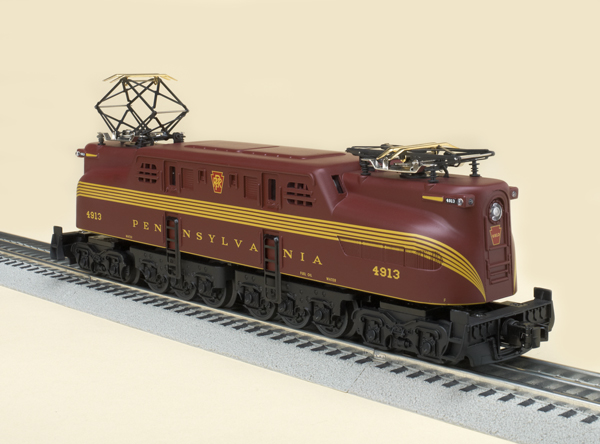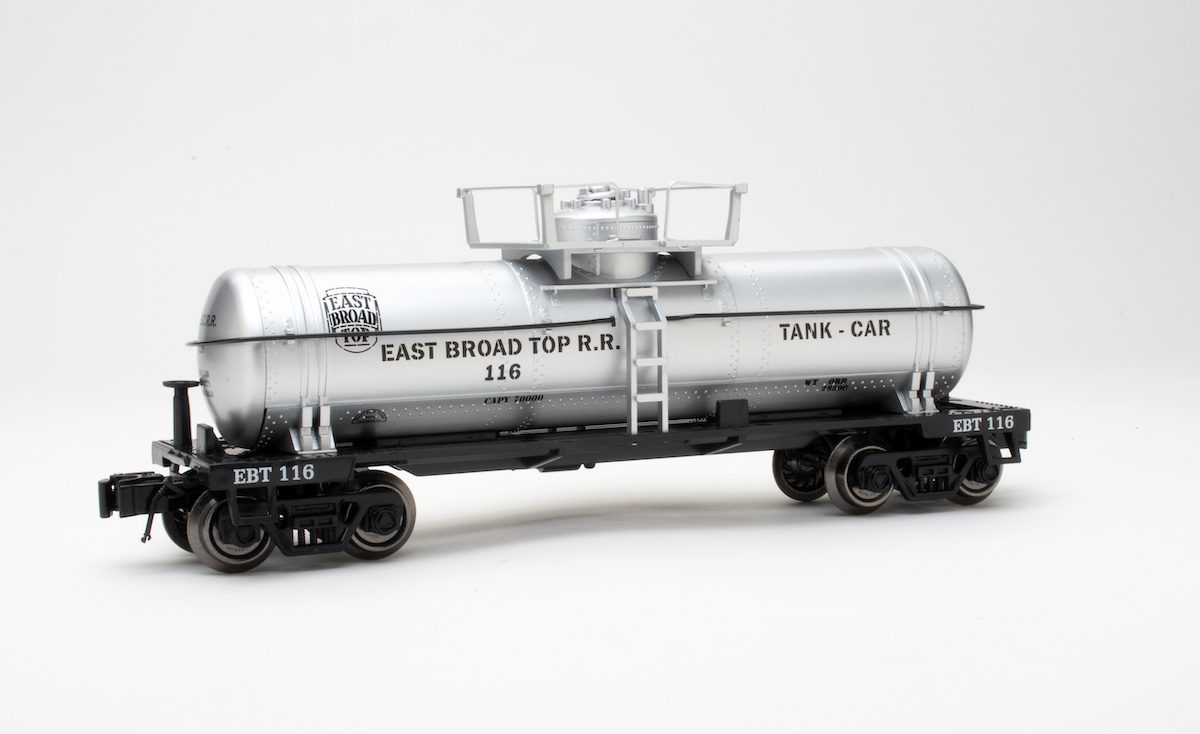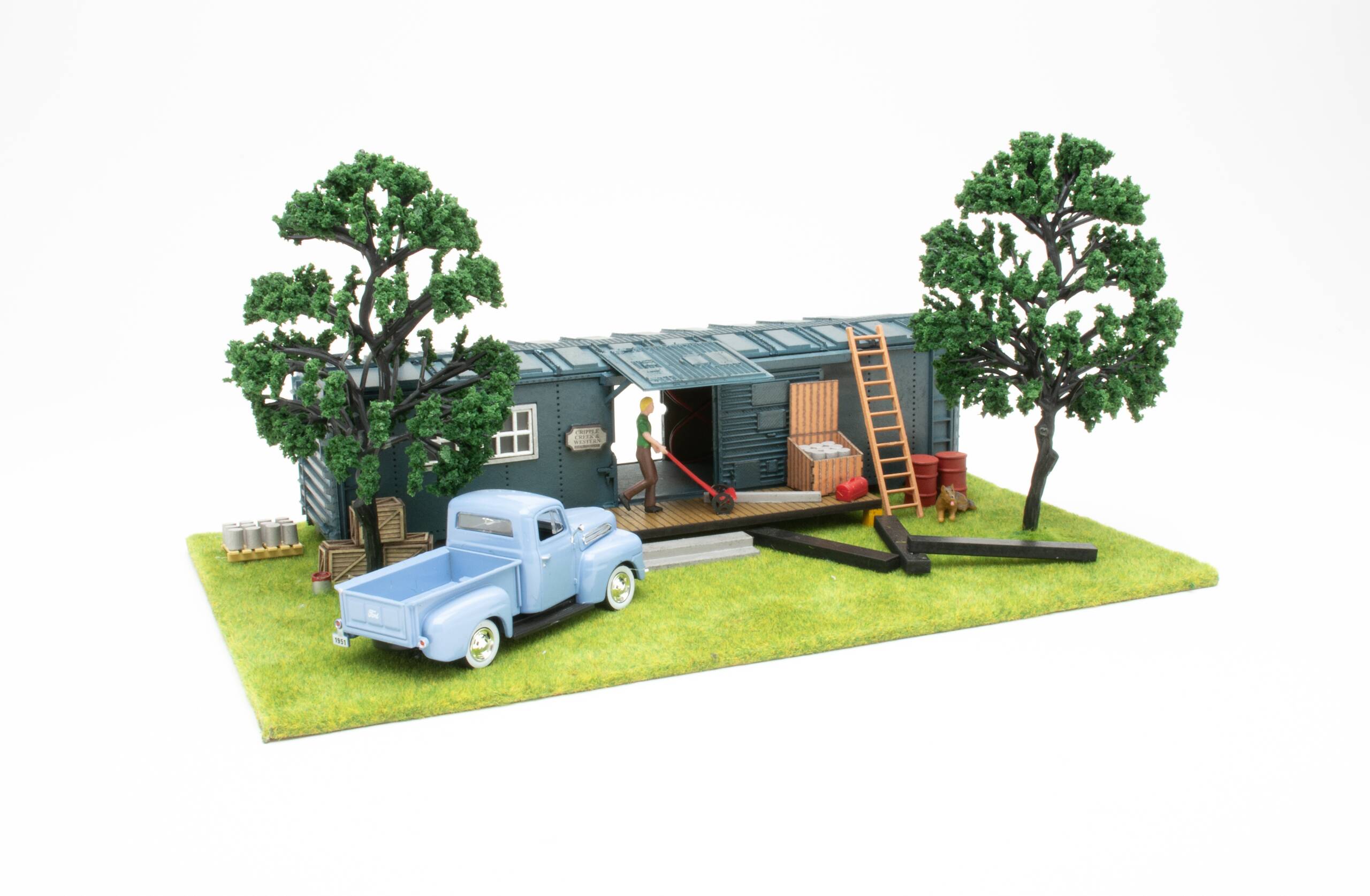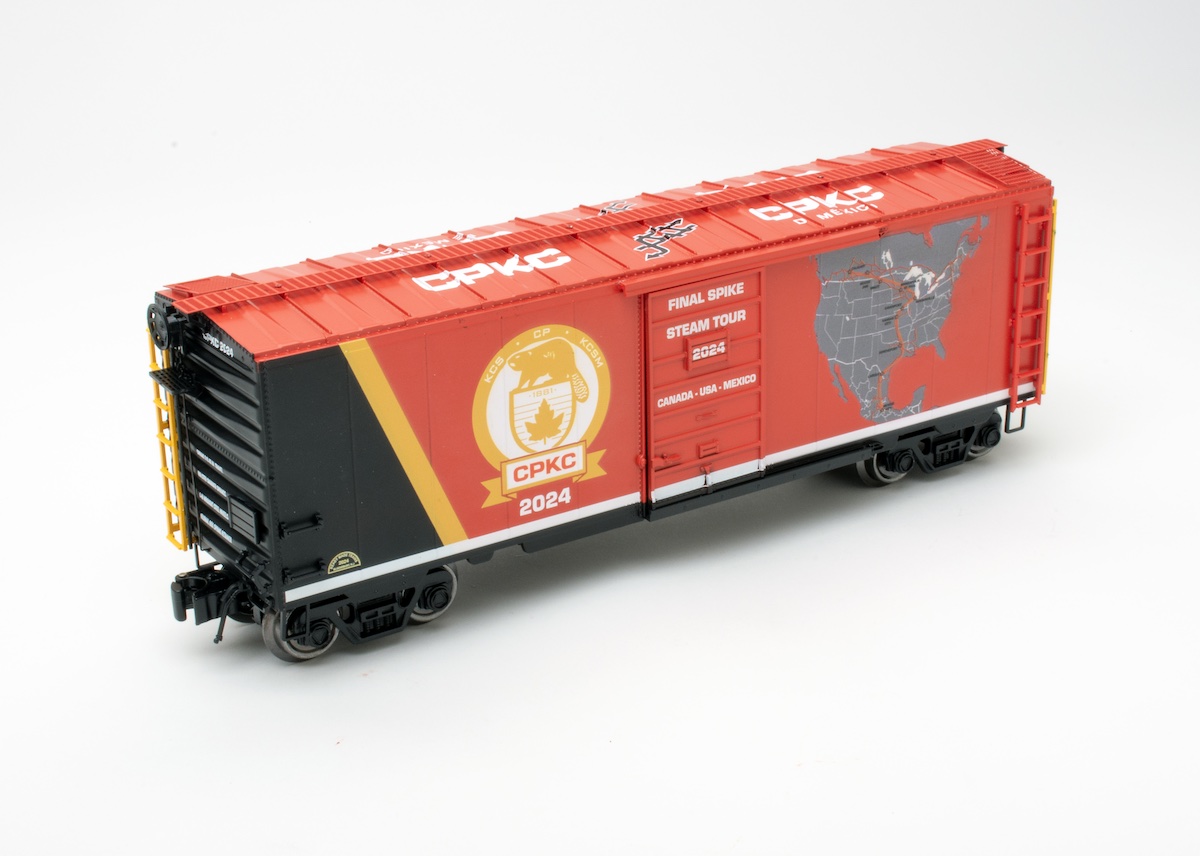So unless you are a hardcore collector, new may indeed be better than vintage.
I would not have guessed that I’d be reviewing a second traditional-size GG1 within two issues. Well, after last month’s look at the patriotic GG1 from RMT by AristO, we’re going to take a look at the latest traditional version of the GG1 from MTH’s RailKing line – this version packing ProtoSound 3.0 and automatic, self-raising pantographs keyed to the locomotive’s direction of travel.
Opening the box
I always enjoy unpacking a GG1, regardless of its make or vintage. The venerable Pennsylvania RR electric-profile locomotive was the face of railroad electrification (and modernity) for decades.
The O gauge model represents the ultra-swank streamlining of the past, but the pantographs and complex running gear represent the down-and-dirty industrial side of things.
The casting of the pilot and running gear is crisp and clean. On the face of the pilot you have cast-in covers representing multiple-unit ports and simulated brake lines. On the side are steps.
The nose has the now-familiar gentle upward curves that are smooth to the touch (save, of course, for the side air intakes). The nose has a simulated hatch with cast-in handrails and safety bars. The headlight is in the top of the door frame, just above a Pennsy keystone logo.
The classification lights are placed in the housing of the number boards – one on each corner of the model.
The shell is well executed and has the expected cast-in detailing of window safety bars, vents, and equipment hatches. Of special note is that this model has plastic window inserts simulating glass panes that look pretty smart.
The sides of the shell have two sets of ladders running up to the cabs (remember – the GG1 has two cabs, not just one). In the time-honored tradition of a “doorless” GG1, this model has smooth sides.
This was done because, back in caveman days, it would have been too difficult (if not impossible) to paint the Pennsylvania RRs famous striping across those details and have it look good and sharp. I accept this compromise, and the striping does look good. So this model is true to the postwar toy.
The painting and decoration of this model were flawless, and the striping was sharp. The Pennsy keystones were superb!
On the test track
As far as traditionally sized GG1s go, this is the Swiss Army Knife of them all. It has all the functions of ProtoSound 3.0 as well as two coil couplers, but now boasts the value-added feature of motorized pantographs. This feature may be the first time I’ve seen this cool action on a RailKing locomotive.
On first powering up the GG1, the pantographs start to do their thing to determine what position they are in versus the direction the model expects to travel.
You’ll hear a bit of a motor sound (like a moustache trimmer); once the correct direction is determined (the default forward), you won’t hear the pantograph motors again until you change direction.
As I’ve noted for years, the sound system for an electric locomotive is something like listening to your toaster oven. You pretty much get a hum. The other background noises (such as compressors, the ker-thunk of couplers opening, and crew chatter) carry off the effect well.
One comment on the horn/bell. The horn was fine, and there was a nice, rich sound to the bell – it sounded more like a traditional locomotive bell sound than a tone from an automatic ringer on a diesel.
Our conventional-mode low-speed average was 3.3 scale miles per hour, while the command-mode low-speed average was 2.7 scale miles per hour.
Our high-speed average was 64.7 scale miles per hour.
The solid little electric generated a drawbar pull of 2 pounds, 7 ounces.
This MTH model is a terrific engine to operate, and its functional pantographs really add a unique element to running a train. If you’re operating a traditional-size O gauge fleet, you may want to consider this version of the GG1 to pilot your Broadway Limited.
Features: O-31 operation, die-cast metal construction, two can-style motors, ProtoSound 3.0, coil couplers, and motorized operating pantographs
www.mthtrains.com















i AM PLANING ON ADDING THE GG1 TO MY LAYOUT !